Well Permits
All non-exempt wells must obtain a permit. Existing non-exempt wells (wells with an approved registration prior to January 1, 2019) will obtain a Historic Use Permit. New wells will obtain an Operating Permit.
Permit Applications
Application to Amend an Operating Permit
Permit Application Process
NOTE: The following instructions are intended to provide general guidance and are not a substitute for the specific requirements of the Prairielands Groundwater Conservation District Rules. These instructions should not be relied upon by a registrant in lieu of review and understanding of the District Rules.
- Step 1 – Prior to applying for an Operating Permit, the applicant shall meet with the General Manager for a pre-application meeting where the District will help the applicant complete all necessary application forms. When possible, please provide the District any proposed well information or water needs prior to the pre-application meeting.
- Step 2 – A person who already holds an Operating Permit for a well or well system will need to file an application to amend the Operating Permit to make any substantial changes to the well or well system.
- Step 3 – Once the Operating Permit Application is deemed administratively complete, it will be scheduled for a Public Hearing in accordance with Section 10 of the District Rules. Any related well registration applications will also be heard as part of the permit.
- Step 4 – The Operating Permit holder will equip the well with a meter prior to producing from the well and will comply with the groundwater production reporting and fee payment requirements for these rules.
- Step 5 – Once an Operating Permit that authorizes drilling, equipping, completing, or substantially altering the size or capacity of a well is approved, the permit holder has 180 days from the date of issuance to complete activities authorized in the permit.
*Maximum annual authorized production from the well or well system shall be limited by the Board to the lessor of: a) Reasonable annual groundwater demand during term of permit, for which the General Manager will provide a recommendation to the Board based on technical review; or b) 50,000 gallons per year per acre owned contiguous to well site.
- Step 1 – Submit Historic Use Permit Application and all necessary fees by September 1, 2019. The applicant must provide evidence of an existing and historic use in accordance with the District Rules. (Applicant may amend the application until January 1, 2020).
- Step 2 –The General manager will review the application and determine administrative completeness.
- Step 3 – Once administrative completeness has been determined, the General Manager will inform the applicant in writing the status of the application, as well as whether the application requires any additional information. The application may be deemed to have expired, at the discretion of the Board, if the applicant does not complete the application within ninety (90) days of the date of the District’s initial request for additional information.
- Step 4 – The General Manager will conduct a technical review of the application and prepare a recommendation for Board action on the application. The General Manager may request additional information from the applicant to support the technical review and development of a recommendation. The Board begins review on January 1, 2020.
- Step 5 – After completing the technical review and developing a recommendation on an application, the General Manager will shall issue notice of the recommendation and setting of the preliminary hearing to the applicant.
*If the owner of a well fails to apply for a Historic Use Permit on or before September 1, 2019, the well owner shall forfeit their right to make any future claim or application to the District for a Historic Use Permit and forfeit rights and ability to operate the well unless the owner applies for and obtains an Operating Permit from the District that authorizes production from the well.
Compliance Orders
Compliance Order Application – This application for a Compliance Order must be accompanied by an application for an Operating Permit if the applicant does not already hold an Operating Permit and/or a Historic Use Permit for the same well.
In accordance with District Rule 5.5, a Compliance Order is required if a person seeks to produce groundwater in an annual amount that exceeds the amount that can be authorized by permit(s) under the District Rules. The applicant must be (1) the holder of a Historic Use Permit and/or Operating Permit issued by the District; or (2) an applicant for an Operating Permit who currently does not hold any District permit for the operation an existing well or the drilling and operation of a new well. Groundwater production under compliance orders and their renewals is limited to a maximum of twenty (20) years to enable the permit holder sufficient time to secure an alternative water source. Payment of a disincentive fee is required for groundwater production authorized under a compliance order. To ensure an applicant understands the implications of a Compliance Order, the District recommends applicants schedule a pre-application meeting with District staff prior to final submission of this application.
Steps to Report Meter Readings through the District’s Database
The steps to reporting meter readings on the District’s Database were recently modified for simplicity. If you have questions or run into any issues, please contact the District at 817-556-2299.
Steps to Reporting Batch Readings, Meter Rollover or Replacement to the District
Reminder: Your meter readings are required to be submitted to the District by the 15th of the following month (i.e. November readings are due December 15)
Reading an Analog Display
The large sweep hand on the dial measures water use in gallons, one gallon of water passes through the water meter as the sweep hand moves from one number to the next (e.g., 0 to 1). Every time the sweep hand makes a full rotation, that is 10 gallons, 100, 1,000 etc…The last number on the right is a static zero (does not change). When you record your reading to report to the District, make sure to add the stationary zero(s) as the final digit.
Reading a Digital Meter
If you have a digital meter, it may need light for activation so you may need to shine a flashlight on it. The display typically alternates between the meter reading and the flow rate. The meter reading equals the gallons used while the flow rate equals the number of gallons per minute flowing through the water meter.

